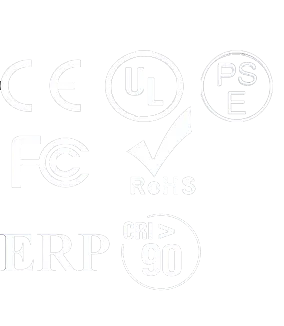
LED Neon Strips vs. Traditional Neon Lights: Key Differences and Benefits
In the ever-evolving world of LED lighting, consumers and businesses alike are constantly searching for the best options for their signage and decorative needs. Among the most debated topics is the comparison between LED neon strips and traditional neon lights. This article delves into the key differences and benefits of each, focusing on the unique advantages of LED neon strips in today’s market. The differences between LED neon strips and traditional neon lights span various aspects including their construction, energy efficiency, durability, flexibility, safety, and cost.
Table of Contents
Construction and Technology
Traditional Neon Lights
Traditional neon lights consist of glass tubes filled with neon gas, which emitts light through a chemical reaction when an electrical current passes through the gas. These lights have been a staple in signage for decades, known for their vibrant colors and nostalgic charm. However, they come with several shortcoming, including high energy consumption, fragility, and complicated installation processes.

LED Neon Strips
LED neon strips, on the other hand, are made from flexible circuit boards embedded with light-emitting diodes (LEDs).it generate lights through semiconductor technology. These strips mimic the appearance of traditional neon while offering enhanced versatility and practicality. They are suitable for various applications, from commercial signage to home decor, making them a popular choice in the LED lighting industry.

Energy Efficiency
One of the standout features of LED neon strips is their energy efficiency. Traditional neon lights have long been admired for their vibrant glow and aesthetic appeal. However, they are notably less energy-efficient, converting only about 20% of the electricity they consume into visible light.The remainder of the energy is lost as heat, making these lights less effective in terms of overall energy usage. To operate, traditional neon lights typically require between 15,000 to 18,000 volts, which not only results in higher energy consumption but also poses safety risks during installation and maintenance.
Compared to traditional neon lights, which consume substantial electricity, LED Neon Lights options can reduce energy usage by up to 80%-90%. For similar applications, LED neon strips use only 15-20% of the power that traditional neon lights consume. This efficiency not only translates to lower utility bills but also less frequent replacements, given their longer lifespan of up to 50,000 hours. This makes LED neon strips a financially savvy choice for both residential and commercial applications.
Durability and Lifespan
When considering lighting options, durability and lifespan are critical factors that can greatly impact both performance and cost-effectiveness.
Traditional neon lights typically have a lifespan of about 15000 to 18000 hours, provided they receive proper maintenance. However, they are made of glass, making them vulnerable to breakage during installation or from environmental factors, leading to potential replacement costs and downtime. For businesses relying on signage, the risk of damage can result in lost visibility and revenue.
In contrast, LED neon strips are constructed from durable materials, making them more resistant to impacts and ideal for both indoor and outdoor use. furthermore, it offer a significantly longer lifespan, ranging from 50,000 to 100,000 hours—often translating to over a decade of use. This impressive longevity means that LED neon strips can last several times longer than traditional neon lights, reducing the frequency and costs associated with replacements. it is especially valuable for businesses that require reliable signage.
Flexibility
Traditional neon lights are constructed from rigid glass tubes, which significantly limits their design possibilities. This inflexibility restricts creativity, making it difficult to produce intricate shapes or custom configurations.
In contrast, LED neon strips are renowned for their high flexibility, they can be easily cut, bent, and shaped to fit a variety of designs, making them perfect for both creative projects and standard signage. Whether it’s elegant curves or bold geometric designs, these strips can easily accommodate diverse artistic visions. This adaptability makes LED neon strips a favorite among architects, interior designers, and DIY enthusiasts looking to create unique lighting effects.
In summary, LED neon strips offer unmatched flexibility and ease of installation, making them the ideal choice for anyone seeking to bring their creative lighting ideas to life without the complexities associated with traditional neon lighting.

Installation and Maintance
Installing traditional neon lights often necessitates professional skills and specialized equipment, The complexity involved in handling glass and ensuring proper electrical connections can lead to higher costs and extended installation times. Additionally, These glass tubes can develop leaks or other issues that compromise their functionality, often requiring skilled technicians to diagnose and repair problems. Routine maintenance is essential not only for safety but also for preserving the vibrant glow that makes neon lights so appealing. The need for professional intervention can lead to increased costs and downtime, particularly for businesses that rely on their signage for visibility and branding.
In Contrast, Installation of LED neon Lights is straightforward and often does not require professional assistance. Many strips come with user-friendly mounting options, such as adhesive backing or clips, allowing for quick and easy setup. This ease of installation saves both time and money,making LED neon strips a practical choice for anyone seeking a reliable and low-maintenance lighting solution.
Color Options and Brightness
Traditional neon lights are known for their vibrant glow, but they are limited in color options. The colors produced are primarily determined by the gases used within the glass tubes. While these lights can deliver striking effects in specific colors, the palette remains constrained, often falling short for projects requiring a broader spectrum. Additionally, traditional neon lights generally emit a consistent and bright light, which can be visually captivating; however, this brightness is fixed and cannot be adjusted to suit varying environments or moods.
In contrast, LED neon lights offer a remarkable variety of color options, including single colors, multi-color variations, and even color-changing effects. This versatility allows for creative lighting designs that can match any theme or occasion. Whether it’s a soft pastel for a cozy setting or vibrant hues for an energetic atmosphere, LED neon strips can deliver.
Furthermore, LED neon strips allow for adjustable brightness levels, enabling users to dim or enhance the light as needed. This feature is particularly beneficial in environments where lighting needs may change throughout the day or for events requiring different ambiances.
In summary, while traditional neon lights provide a limited color range with bright, fixed lighting, LED neon strips offer a wealth of color options and adjustable brightness. This flexibility not only enhances creative possibilities but also allows for tailored lighting experiences in various settings.

Cost Effective
Though the initial investment for LED neon strips may be higher than traditional neon lights, their long lifespan and energy efficiency result in significant savings over time. LED lights can last up to 50,000 hours or more, while traditional neon lights typically last around 15,000 hours. This longevity reduces the need for replacements, making LED strips a cost-effective solution in the long run.
Safety
Safety is a paramount concern in any lighting application. Traditional neon lights operate at high voltages, posing risks if not handled correctly. During operation, these lights can become quite hot, increasing the risk of burns if touched. Moreover, traditional neon tubes contain gases that can be harmful if the glass breaks. In the event of a tube shattering, not only is there a risk of injury from glass shards, but exposure to the gases can pose health hazards, making traditional neon lighting a less-than-ideal option in terms of safety.
In contrast, LED neon Light Strips operate on low voltage, significantly enhancing safety during installation and use. They produce minimal heat during operation, allowing users to touch the strips without the risk of burns. This makes them suitable for various applications, including indoor settings where people are frequently in close proximity to the lighting.
Additionally, LED neon strips do not contain harmful gases, further enhancing their safety profile. Without the risk of toxic exposure from broken tubes, these lights provide peace of mind for both residential and commercial users.
To be conclude, LED neon strips offer a safer alternative to traditional neon lights, combining low heat production and the absence of hazardous materials. This makes them an excellent choice for environments where safety is paramount, ensuring that users can enjoy vibrant lighting without worry.
Conclusion
In conclusion, while traditional neon lights hold a nostalgic appeal, the numerous advantages of LED neon strips make them the superior choice for both commercial and residential applications. With their energy efficiency, durability, ease of installation, color consistency, and safety, LED neon strips meet the diverse needs of today’s consumers.
As the LED lighting industry continues to grow, making the switch to LED neon strips not only enhances aesthetic appeal but also supports sustainability and cost savings. For anyone considering their lighting options, LED neon strips provide a versatile and effective solution that can illuminate spaces with style and functionality.
| Comparision | Traditional Neon Lights | LED Neon Lights |
|---|---|---|
| Lifespan | 15000-18000 hours | 50,000 to 100,000 hours (over a decade of use) |
| Durability | Fragile; made of glass, prone to breakage | More durable; resistant to breakage |
| Flexibility | Rigid glass tubes limit design possibilities | Highly flexible; allows for intricate designs |
| Installation | Requires professional installation and maintenance | Easy installation with simple mounting options |
| Maintenance | Requires regular maintenance and professional servicing | Minimal maintenance |
| Color Options | Limited color options based on gases used | Wide range of colors, including color-changing options |
| Brightness | Generally brighter but fixed brightness | Adjustable brightness; can be dimmed |
| Safety | Can get hot; contains harmful gases | Minimal heat production; no harmful gases |
Share this article
Written by : Sophia Ng
Hey there! This is Sophia Ng, Worked for Sunroleds with 15 years in the industry, specializing in sales and marketing.
I'm committed to excellence and always aim to exceed expectations. Outside of work, I enjoy traveling and exploring traditional Chinese culture.
Let's connect and make some magic happen!

